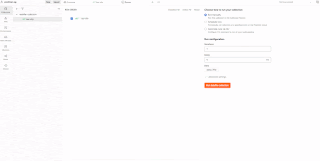API testing is an important part of the software development process as it helps to ensure that the application programming interfaces (APIs) of a system are functioning as expected. One popular tool for API testing is Postman, which allows developers to easily create, execute, and organize tests for their APIs. However, manually running these tests can be time-consuming and error-prone. This is where the Postman Runner comes in. The Postman Runner allows you to automate your API testing process and integrate it into your continuous integration and delivery (CI/CD) pipeline.
Before diving into how to use the Postman Runner, let's first take a look at what Postman is and how it can be used for API testing. Postman is a powerful tool that allows developers to easily create, test, and organize their API requests. It provides a user-friendly interface that allows users to create requests, add headers, and body, and test the response. You can also use variables and environment to make your test more dynamic.
To begin using the Postman Runner, you will first need to have the Postman application installed on your system. Once you have the application installed, you can use the Postman Runner to execute your tests by following these steps:
- Open the Postman application and select the collection you want to run tests for. A collection is a set of requests that you can organize and manage.
- Click on the "Runner" button in the top right corner of the screen. This will open the Runner window.
- In the Runner window, select the environment you want to run the tests in. An environment is a set of key-value pairs that can be used to store data such as base URLs or authentication tokens.
- Click on the "Start Test" button to begin running the tests. The Runner will execute the requests in the collection and display the results in the window.
In addition to running tests through the Postman application, you can also run your tests from the command line using the Newman tool. Newman is a command-line interface for Postman that allows you to run collections and environments from the command line. To use Newman, you will need to have Node.js and Newman installed on your system. Once you have Newman installed, you can run your tests using the following command:
newman run collection.json -e environment.json
The above command will run the collection.json file with the specified environment.json file. You can also pass different options like the reporter, iteration data, and more.
Another way to automate your Postman test is by integrating it with Jenkins. Jenkins is a popular open-source automation server that can be used to automate various tasks such as building, testing, and deploying software. To run your Postman tests with Jenkins, you will need to install the Newman plugin. This plugin allows you to run your Postman tests as part of a Jenkins job. Once the plugin is installed, you can create a new job, configure the plugin with your collection and environment files, and run your tests as part of the job.
In conclusion, the Postman Runner is a powerful tool that allows you to automate your API testing process and integrate it into your CI/CD pipeline. It provides an easy-to-use interface for running tests, and the ability to run tests from the command line and Jenkins integration further extends its capabilities. By automating your API testing process, you can ensure that your APIs are functioning as expected and reduce the risk of errors. With Postman Runner, you can save a lot of time and effort, and increase the reliability of your tests. Using postman runner you can also provide your test data input as CSV data file we will try to cover in seperate article

